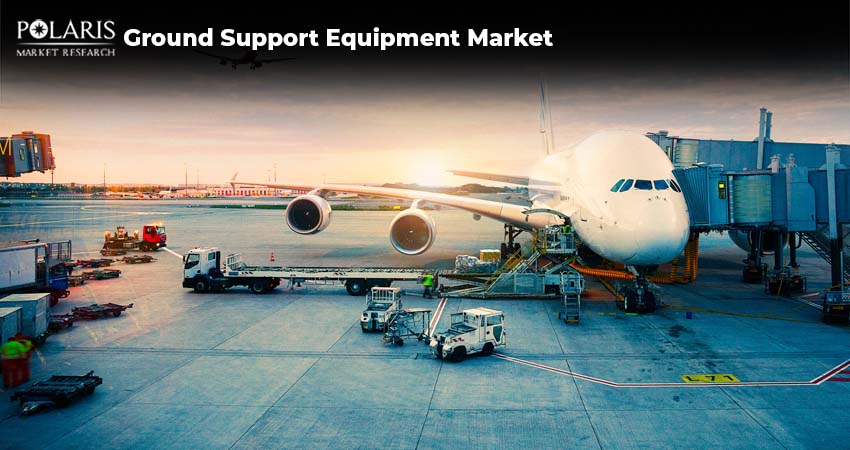How Ground Support Equipment (GSE) Ensures Efficient Airport Operations?

Ever wonder at the smooth ballet of activity around an airplane as it lands or is preparing to depart? Passengers come and go with seeming ease, baggage vanishes and reappears as if by magic, and the huge metal bird seems to be serviced by an invisible army. But staged behind the choreographed precision is a string of expert vehicles and equipment, the unsung heroes of the airport: ground support equipment (GSE). These often-overlooked pieces of equipment are the backbone of airport operations, ensuring the safe, efficient, and timely turnaround of aircraft.
From facilitating passenger boarding to powering aircraft systems while on the tarmac, GSE plays a pivotal role in the efficiency and safety of airport operations. In this blog, we will explore you need to know about GSE, from its key components to the latest technological advancements. Stick with us!
Understanding GSE
GSE refers to the various tools and vehicles used to service aircraft between flights. Positioned on the airport apron, the area where aircraft are parked, loaded, unloaded, refueled, or boarded, GSE ensures that aircraft operations proceed without delay. The primary functions of GSE include:
- Aircraft Mobility: Towing and positioning aircraft using tugs and tractors.
- Passenger and Cargo Handling: Loading and unloading baggage, cargo, and passengers.
- Aircraft Servicing: Refueling, providing power, air conditioning, and other essential services.
- Maintenance Support: Facilitating routine checks and repairs.
Market Metrics
The global ground support equipment market was valued at USD 6.14 billion in 2024. Between 2025 and 2034, the market is anticipated to register a CAGR of 3.8%, growing from USD 6.36 billion in 2025 to USD 8.90 billion by 2034.
Key Types of GSE
GSE encompasses a vast array of vehicles and tools, each designed for a specific purpose. Think of it as a specialized toolkit for airplanes and the airport environment. Here are some of the major ones:
- Aircraft Tugs and Tractors: These powerful vehicles are essential for moving aircraft within the airport premises. Innovations such as the omni-directional vehicle (ODV) have introduced tugs capable of moving in any direction, enhancing operational efficiency in confined spaces. Depending on the aircraft size and airport infrastructure, tugs can be:
- Towbar Tugs: Connect to the aircraft via a towbar.
- Towbarless Tugs: Lift the aircraft's nose gear for movement, offering greater maneuverability.
- Ground Power Units (GPUs): While on the ground, aircraft require electrical power for lighting, air conditioning, and system checks. GPUs supply this power, eliminating the need to run the aircraft's engines or auxiliary power unit (APU), thereby conserving fuel and reducing emissions.
- Air Start Units (ASUs): These units are used to start aircraft engines, especially those with pneumatic engine starters. They provide the necessary pneumatic power to start aircraft engines, especially when the onboard APU is non-functional. They are crucial for ensuring timely departures and minimizing ground delays.
- Passenger Boarding Bridges and Stairs: Facilitating the safe and efficient boarding and disembarkation of passengers, these structures connect the terminal to the aircraft. They are also known as jet bridges or gangways. In situations where boarding bridges aren't available, mobile stairs are deployed.
- Baggage Handling Systems: Efficient baggage handling is vital for timely flight operations. These are complex networks of conveyors, automated sorting machines, and control systems used at airports to transport and manage checked luggage from check-in counters to aircraft and back to baggage claim. It's a sophisticated, automated system that ensures efficient and secure movement of luggage throughout the airport.
- Refueling Equipment: Aircraft refueling is conducted using specialized fuel trucks or hydrant systems connected to underground pipelines. These systems are designed to handle large volumes safely and efficiently.
Emerging Trends Reshaping GSE Landscape
Sustainability and Electric/Hybrid GSE
The shift towards electric GSE is driven by sustainability goals, operational efficiency, and the potential for cost savings. With increasing pressure to reduce emissions, electric GSE is becoming increasingly popular as it can reduce CO2 emissions by up to 48% compared to traditional fossil fuel-powered GSE. Combining electric and traditional power sources can offer a balance between sustainability and operational needs. Biofuels are also being considered as a sustainable alternative to fossil fuels for GSE.
Automation and Artificial Intelligence
Airport operators are increasingly adopting autonomous GSE, such as autonomous baggage tractors, pushback tractors, and baggage handling systems, to improve operational efficiency. These autonomous systems are expected to contribute to a more efficient and seamless airport experience, reducing manual labor and improving throughput. AI algorithms are used for predictive maintenance, optimizing resource allocation, and improving overall efficiency. AI-powered systems are also used for tasks like baggage sorting, automated loading and unloading, and remote control of equipment.
Data-Driven Operations
GSE providers are leveraging data analytics and technology to optimize fleet management, reduce operational costs, and enhance efficiency. This shift is driven by the need for greater resource utilization, real-time monitoring, and smarter decision-making. Using data analytics to identify areas for improvement in GSE operations, such as reducing downtime, optimizing fuel consumption, and improving maintenance scheduling, is one of the key aspects of the trend. By embracing data-driven operations, GSE operators can gain valuable insights into their fleet performance, optimize resource utilization, reduce operational costs, and improve overall efficiency.
To Sum It Up
GSE remains the foundation of efficient and safe air travel. As the aviation sector advances, embracing technology improvements and sustainability, the role of GSE becomes increasingly important. Their continuous evolution, driven by innovation and a commitment to safety and sustainability, will continue to shape the future of air travel for years to come.

